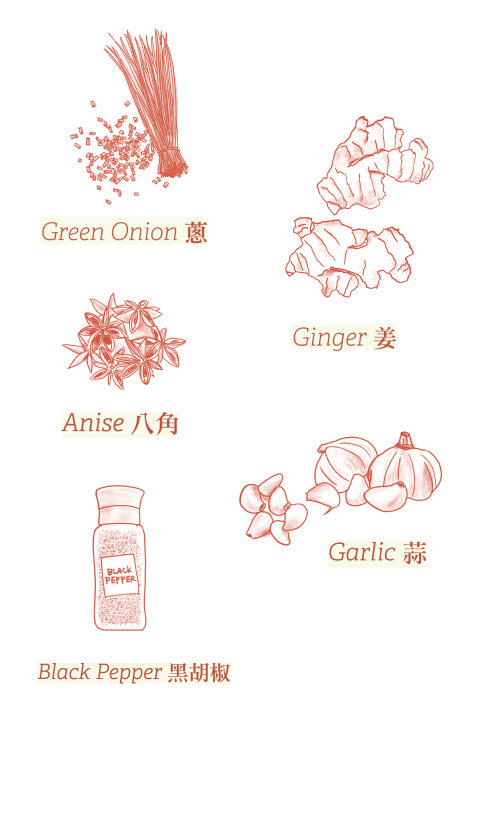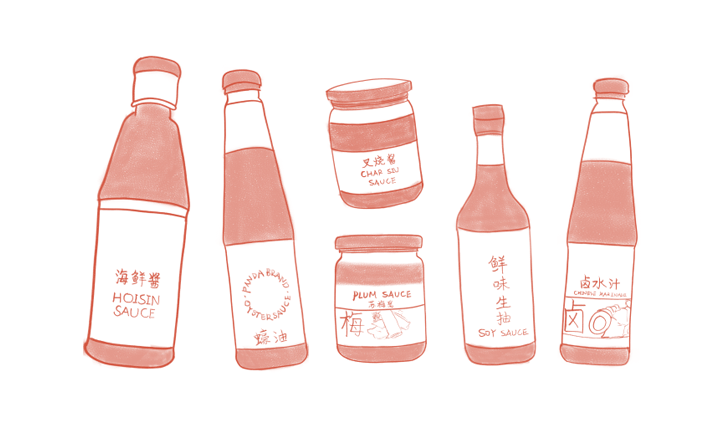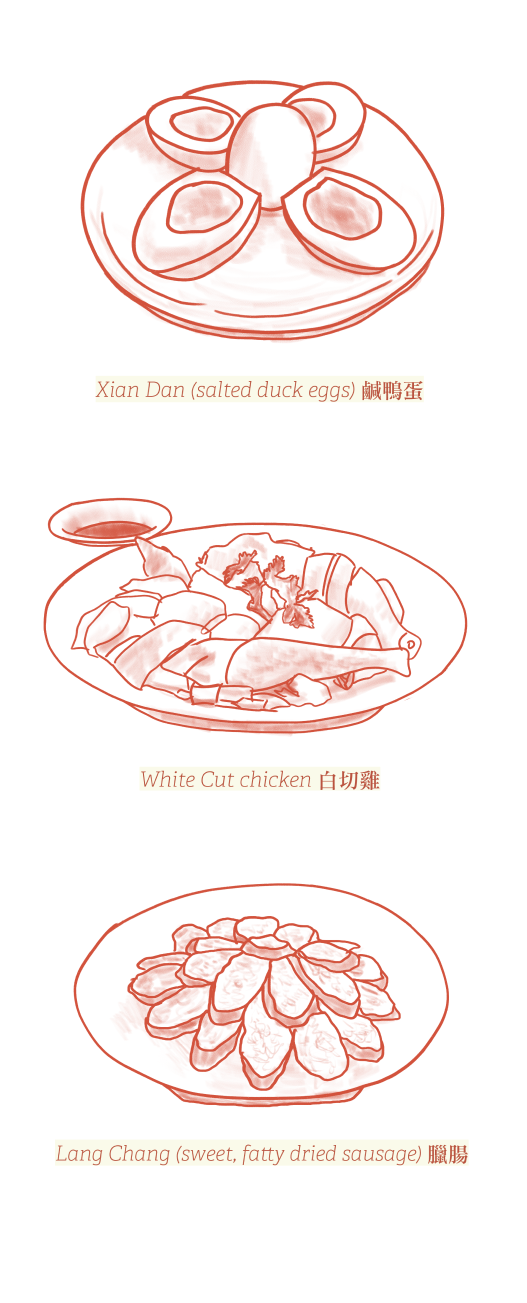Spices used: Chives, coriander leaves, anise, touches of black pepper, and slivers of ginger provide a mild tanginess that accentuates the flavor of the food. But unless the food in itself smells or tastes bad alone, just a little of these spices are used.
Rice vinegar accentuates the flavor of vegetables, and a little salt does also. A pinch of sugar gives food a mildly sweet taste that is characteristic of many Cantonese dishes and snacks. A little sesame oil adds a mild tanginess too.
But if the food is delicious as it is, almost no seasoning is added. An example is fresh sea fish. It isn't served raw like Japanese sashimi, but to preserve and accentuate the delicious flavor, the Cantonese steam it and add just a little soy sauce, ginger or perhaps bits of chives. Like the Japanese, Cantonese delight in the natural flavors of fresh sea fish.
Several sauces are important condiments in Guangdong cuisine. The most widely used sauces include hoisin sauce, oyster sauce, plum sauce,
sweet and sour sauce, and soy sauce.


Cantonese chefs prefer cooking techniques like stir-frying, boiling, steaming, baking, braising, sauteing, shallow frying, deep frying and roasting. Most of them can preserve the natural and original flavor of food materials. Cantonese chefs are especially good at controlling heat of fire and dish decorating, and dishes they cooked is not only tasty but appealing in both appearance and smell.
Cantonese cuisine is typified by simple dishes that are all about clear, natural flavors, reflections of the region's abundant seafood and agriculture.
While cooks in Sichuan and Dongbei may blast their food with spice, Cantonese cooks employ very few heavy spices, letting main ingredients speak for themselves. Also unlike the cuisines of Northern and Western China, lamb and goat are rarely seen on the Cantonese table. Pork, beef, chicken, fish, and seafood, and often all parts thereof, are the primary proteins. (Game meats like civet, finch, and snake are consumed for medicinal purposes.)
Ed Schoenfeld, the New York City restaurateur behind American-Chinese icons Shun Lee, Pig Heaven, and Red Farm, and sage of Chinese food in America, regards the Cantonese obsession with freshness thus: "Food is meant to taste like what it is. There might be a lot of manipulation, but the end product is meant to be something that tastes like itself."
You see the practice most in the Cantonese treatment of live fish. In Chinatown, there are bins of grouper, flounder, and countless other aquatic edibles. The are also live fish plucked from a restaurant aquarium to be steamed or fried to order remains a tradition in Chinatowns.
Cantonese fried fish should be as fresh and greaseless as the best tempura, and even subtler steamed fish should be light and delicate."Cantonese people want that fish extremely fresh. The beauty to them is the texture the cleanness of the fish," Schoenfeld says.
Kho counts himself a fan of steamed fish, which he says should be doused with a sauce made from soy sauce, rice wine, and a little sugar before finally topped with finely julienned ginger and scallion drizzled with fragrant hot oil. "This savory fish scented with the ginger and scallion could make a gourmand cry if executed perfectly."


Fresh fish and shellfish, beef, chicken, pork, rice, tropical fruits, and a wide array of fresh vegetables are common ingredients in Cantonese food, which makes for mild, fresh, naturally flavored meals. Notable Cantonese dishes include white cut chicken (Baiqieji), roasted suckling pig (Kaoruzhu), and black chicken soup (Wujitang).
Other fermented, dried, or cured ingredients punch up Cantonese cooking's mild flavors. Jiang yao zhu, or fishy dried scallops, are often added to clear soups or the rice porridge congee. La Chang, a sweet, fatty dried sausage that looks like a cross between a Slim Jim and a pepperoni stick, lubricates sticky rice. Xian Dan, wobbly black salted duck eggs, liven up congee with their funky alkaline flavor. And Mei cai, salt-pickled Chinese cabbage, is typically cooked with pork fried rice.
Keep in mind, though, the Cantonese are very open-minded when it comes to ingredients. Being a late bloomer, Cantonese cuisine is an infusion of the best of other cuisines all around the world. Throughout the centuries, Cantonese cuisine has gradually formed its own signature taste, which has captivated the palates everywhere.